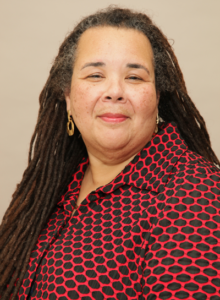
Body, Politics, Love: Wellness Plan Assignment
My teaching goals reflect my expectations that my students will change the world. I want my students to have profound consciousness of love, of themselves as capable beings, of the beauty of creation. I want to instill in them with the necessity to fight for the oppressed, uplift the downtrodden, and conspire with the voiceless for a place in the societal decision-making. I want them to be cunning enough to avoid the shallow passions of those who would exploit their talents, squander doing good, and misuse their power. I want them to be wise. With these ideals in mind, I design into every syllabus the notion of the body.
There are few things more sacred and more political than the human body. Intentionally engaging the body to learn, while simultaneously making the politics of the body part of the course conversation, is a critical way to get to my lofty teaming aims and kindle my student’s passions. Wisdom depends on the body.
A metric I use to assess in-class learning activities is the degree to which I have engaged all the senses of the body in a semester. If, by the end of the semester, I have not engaged all the senses multiple times and in multiple ways, I deem my cache of learning activities for that course as weak. When I engage all the senses multiple times throughout the semester, I notice students’ depth of understanding is higher. I carefully design activities for seeing, smelling, touching, hearing, and feeling, not because of student’s varied learning styles, but because a multisensory encounter is more interesting and is more satisfying to the curiosity. Giving adults permission and opportunity to learn with their bodies is an act of resistance against the current body politics which would deem the body only as a commodity. And it’s more fun than just sitting still.
I am well versed in shaping courses that point to and analyze the ugliness of the hegemonic politics. A notion which oftentimes intrigues my students while studying the politics of the body in the USA is the ways our bodies are used as indicators of inferiority and superiority. It is thought that to gaze upon a body, one can determine who is male, white, straight, and wealthy. Continuing, it is also thought that to gaze upon a body one can determine who is female, not white, not straight, disabled, and poor. This delusion is perpetuated by the bad science portrayed on some TV shows. There is an episode of CSI where the coroner, while investigating a crime scene, uses a caliper to measure the width of the nose of a charred body and informs the detectives that the deceased victim was African American. Disputing this kind of ignorance about the body and race/gender/class/sexual identity politics is the stuff of marvelous classroom discussions.
This semester I wanted to shape a course and a conversation that was a teaching of love, self-worth, dignity, acceptance, and belonging for the personal body, for bodies of knowledge, and communities as bodies of persons. The course is entitled “Reading Deeply.” I selected one book for us to read for an entire semester. The book we are ruminating over is Remnants: A Memoir of Spirit, Activism, and Mothering by Rosemarie Freeney Harding with Rachel Elizabeth Harding. It is a multi-genre memoir that vividly demonstrates an integrated life of deep spirituality and activism. I want my students to be exposed to the wisdom of this text in hopes that they will emulate this wisdom. A thematic thread in the memoir is of healing, wellness, and care for the body.
Pressing students to deeper engage body/identity politics, the first assignment is to create a wellness plan and fulfill that plan throughout the semester. Students reported-in about their plan last week. While each woman was making her report (all the students are women), the other students listened with remarkable tenderness. There was an air of respect and regard as each woman told us of the focus of her plan, the rationale for the focus, and the activities she would pursue over the semester for healing, fitness, balance, and rest. The projects were about living into their best selves by disrupting the patterns of ignoring, abusing, or neglecting their bodies. The plans included stopping some habits and starting new habits. In all cases the women were excited about being given course space to consider her own body and contemplate the question, “do you want to be well?” Asking students to live-into the principals of our reading rather than just “think about” the reading is their preference for learning. Their reporting felt reverent. At the end of the semester, they will report-in again telling the story of attempts at self-care and healing.
The political is always personal. In studying the harm, violence, and inhumanity of identity politics it feels right, needed, even provocative, to teach students to value their own bodies, to respect the enfleshed. The power of love to create a more humane world undoubtedly includes care of self, nurture of body – a tending to the soul.
In the memoir (pp 39-40), Rosemarie recounts the words of her mother after recovering from a near-death experience:
“…. Listen, Rose. When you die, there is nothing, nothing there but love. Everything else is gone.”
“Hmm.” I listened.
“Nothing but love,” she said again. “So while we’re in this world, we have to do whatever we can to love people, to love this world, to take care of all that’s in this world. Because that’s all that matters, the love.”
I closed my eyes briefly. The impact of my mother’s words made me sway ever so slightly where I sat. “Hmm.”
She was ready to get into bed. She was pulling the covers over her shoulders when she said it to me again, “Now don’t forget, Rose. There’s nothing left but love. That’s the most important thing. That’s what you need to know.”
Leave a Reply